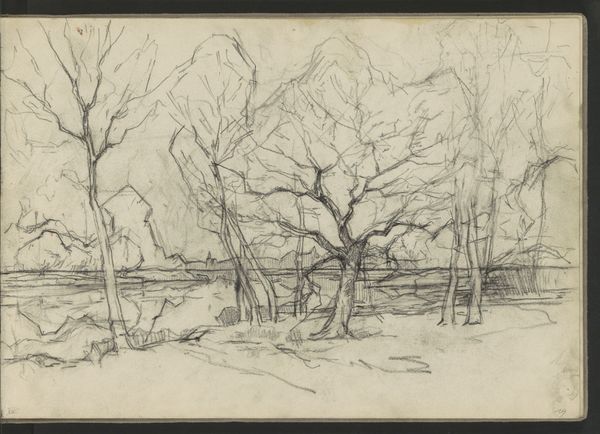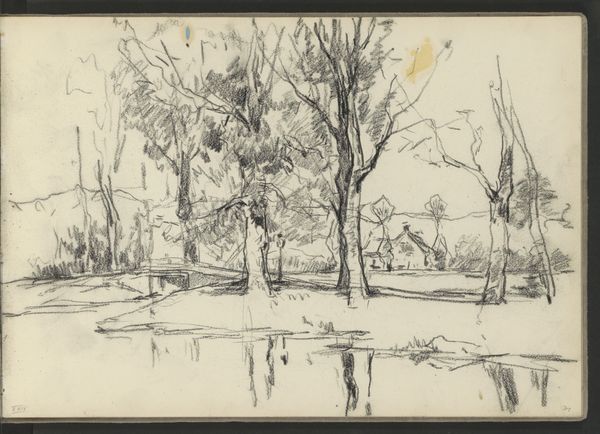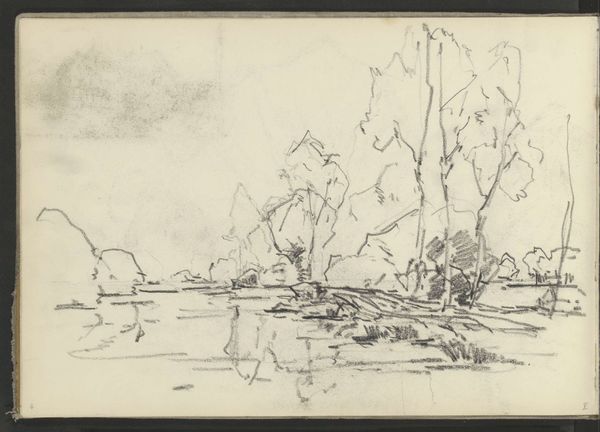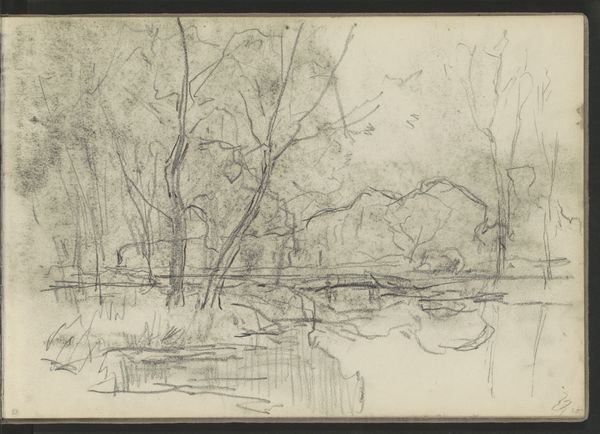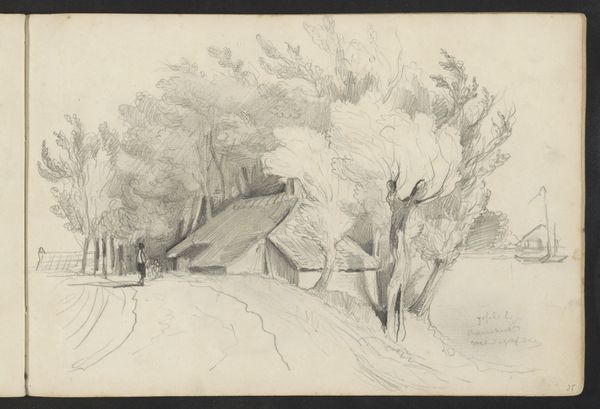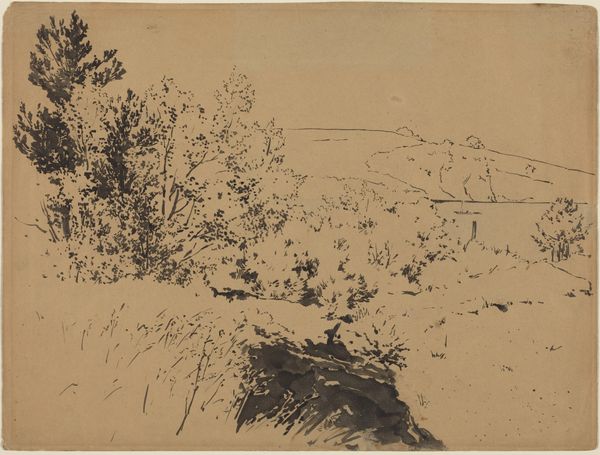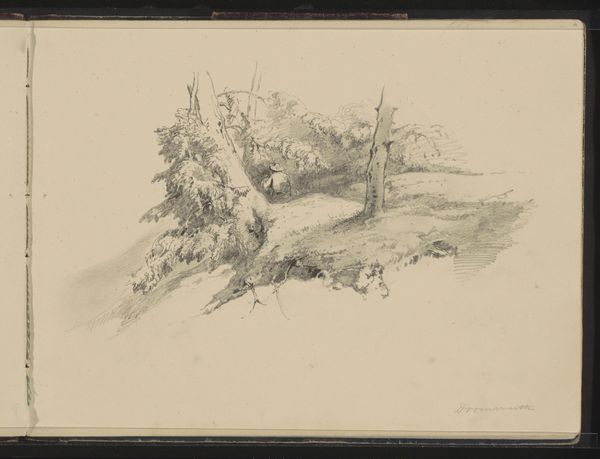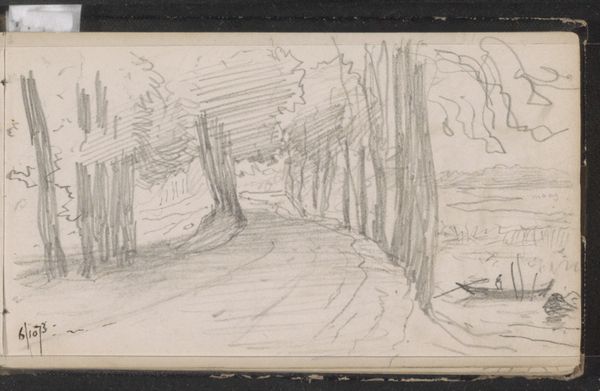
Copyright: Rijks Museum: Open Domain
This drawing, 'Bomen aan een waterkant' by Egbert Rubertus Derk Schaap, uses pencil to depict trees along a waterfront, a scene of serene naturalism. The trees, with their bare branches reaching towards the sky, hold significant symbolic weight. The motif of the bare tree transcends time, reappearing in various cultural and historical contexts. In ancient Celtic traditions, the tree symbolized the axis mundi, connecting the earthly and spiritual realms. Similarly, in Norse mythology, the world tree Yggdrasil served as the cosmos' central pillar. The bare branches, often associated with winter, can be viewed as symbols of death and rebirth, reflecting cyclical patterns of nature and human existence. Consider, too, the psychoanalytic perspective: Trees embody the human psyche, with roots representing the unconscious and branches the conscious mind. The starkness in Schaap’s drawing evokes a sense of introspection, inviting viewers to confront their own psychological landscapes. The raw, unadorned depiction of nature engages us on a deep, subconscious level, echoing primal emotions tied to our ancestral past. Thus, the motif of the bare tree continuously resurfaces, evolving in meaning yet retaining its powerful emotional resonance across generations.
Comments
No comments
Be the first to comment and join the conversation on the ultimate creative platform.
